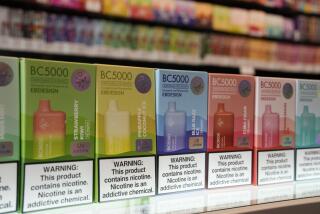Kids may not be drinking enough low-fat milk, the CDC reports
- Share via
Children may be coming up short when it comes to drinking low-fat milk, the Centers for Disease Control and Prevention report.
A recent report from the National Center for Health Statistics finds that, although milk and milk products are recommended in the 2010 Dietary Guidelines for Americans and by the American Academy of Pediatrics, kids may not be drinking enough of the lower-fat kind. Overall, 72.6% of teens and children drink milk daily. Boys drink more milk than girls -- 77.7%, compared with 67.4%.
When it came to what types of milk they were usually drinking, 32.4% said they drank whole milk, 45.4% chose 2% milk, and 20.2% went with low fat. As defined by the study, low-fat milk is 1%, also called skim or fat-free. Reduced-fat milk is 2% milk. The difference in fat percentages may seem small, but in serving sizes disparities are revealed: One cup of 2% milk has 3.1 grams of saturated fat, while 1% has 1.5 grams of saturated fat. Nonfat milk has about 0.4 gram, but whole milk contains 4.6 to 5 grams of saturated fat.
Older children drank low-fat milk more often than younger kids; among children ages 6 to 11, 21.1% said they drank low-fat milk, and among teens 12 to 19, 23.3% drank the stuff. But among children ages 2 to 5, 13% reported regularly drinking low-fat milk.
Differences were seen among ethnic and socioeconomic groups as well. About 5% of black children and about 10% of Latino children said low-fat was their usual milk, while about 28% of white children typically drank that type. Kids in the highest income brackets drank low-fat milk far more than their peers living below the poverty line. Statistics come from the National Health and Nutrition Examination Survey, 2007 to 2008.
“The overall low consumption of low-fat milk suggests the majority of children and adolescents do not adhere to recommendations by Dietary Guidelines for Americans, 2010, and the American Academy of Pediatrics for all children aged 2 years and over to drink low-fat milk,” the report said.
While this report shows that the majority of children are drinking milk on a regular basis, there may be competition from other, less healthful beverages. Two CDC reports released this year focused on sugary beverages and soda. One NCHS report found that about half the people in the U.S. drink a sugary beverage daily. About 70% of boys ages 2 to 19 drink the stuff on any given day, and teens and young adults consume more than other age groups.
The CDC also discovered that water, milk and fruit juice were the three top beverages among high school students. But almost one-fourth surveyed said they drank sweetened soda, and when adding in sugar-sweetened coffee drinks, sports drinks or flavored milk, 63% said they drank sweetened beverages daily.






